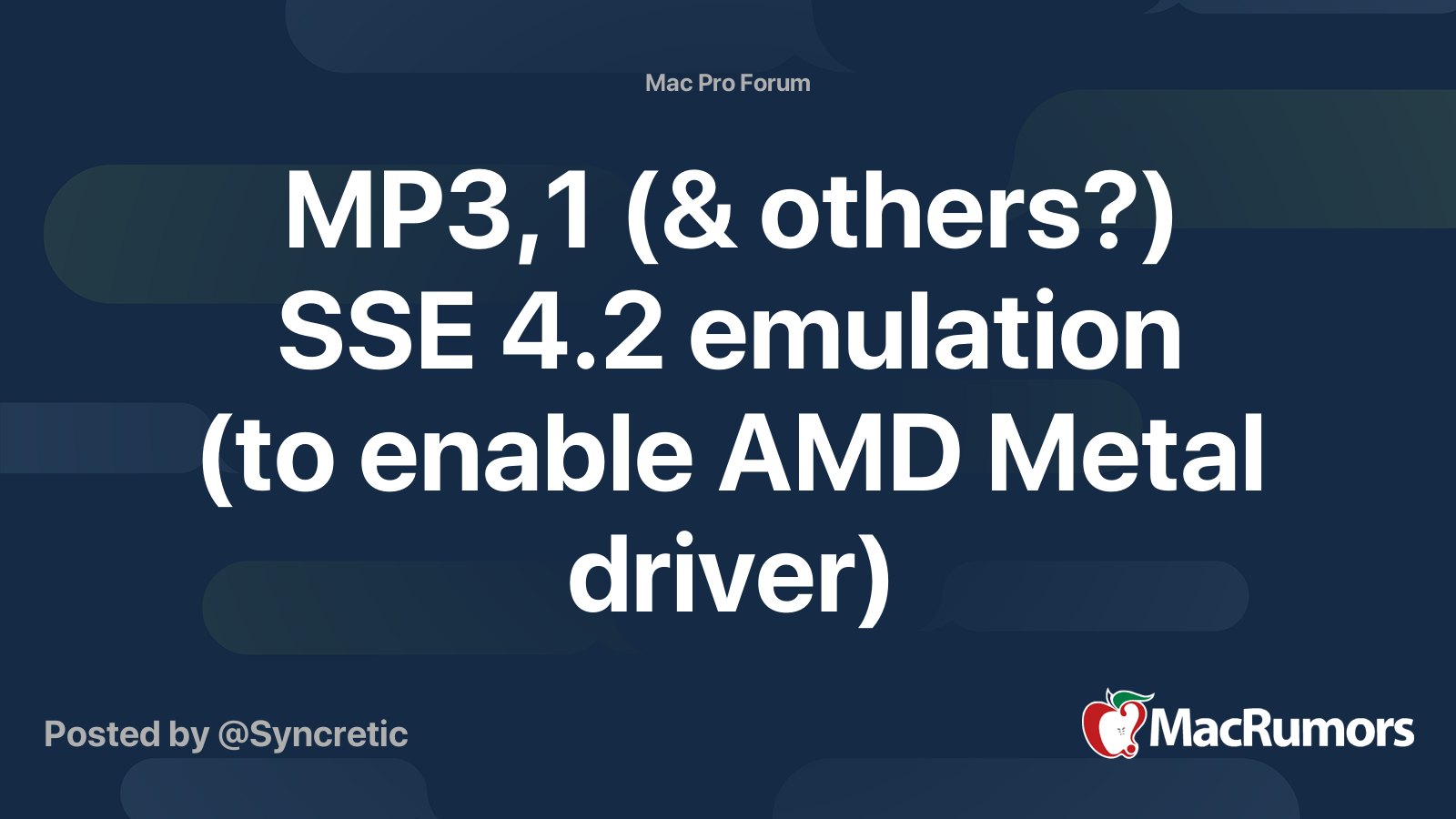If you absolutely need SSE42, you need a new Mac.
The SSE42 emulator, AAAMouSSE, is included in the DosDude package but was actually created by forum user,
@Syncretic. The thread for this is here:
MouSSE (Partial SSE4.2 Emulator) Public Release Current version: 0.95 (8 Jun 2021) When referring folks to MouSSE, please just link directly to this post, which will always contain the latest version & info. EDIT (8 Jun 2021/1 Sep 2021): Monterey changed things up, so a new version was...

forums.macrumors.com
What AAAMouSSE does is sit quietly as a layer watching CPU traffic and when SSE42 stuff is detected, it intercepts this, does the work and responds instead. It works very well but there are two gotchas:
Firstly, It only covers part of the SSE42 instructions. So, if something that is not covered is sent, you will get a crash This is not the case for you
Secondly, a lot of software *ASSUME* the CPU has SSE42 capability once some basic items are checked. Mainly, they check the OS version being used and if all officially supported units have SSE42, they assume you are on a supported unit and send the instructions, AAAMouSSE does its thing and all is good.
Some however, such as what you are trying to run apparently, actually query the CPU first to see whether SSE42 is available. On an MP31, the answer will be "
not available" and while AAAMouSSE intercepts some of those instructions as said, it does not intercept such queries and present that the feature is available for technical reasons that have not been overcome. It only intercepts requests when they are made without checking first.
You can read this post onward for more insight:
In another thread, @lumos asked about a complete SSE4.2 implementation. Let me explain why I'm unlikely to address that anytime soon. (I'm moving the discussion here, so as not to pull the Monterey thread off-topic.) SSE4.2 consists of 6 or 7 instructions. SSE4.2 "proper" consists of CRC32...

forums.macrumors.com
MyBootMgr gives an option to spoof SSE42, that is say that it is available but potential issues are explained by Syncretic. In addition, it does it in a way which only changes the kernel cache but programs that query the CPU directly, will get the true answer of "
not available"
@freqrider has been looking at the MyBootMgr angle ... probably without much luck:
Apologies for my error. I neglected to switch the UpdateSymBios flag to false in addition to the CPUiD ‘J’flag. Once I turned off UpdateSymBios, the ‘J’ flag booted as expected. Issue resolved! :)

forums.macrumors.com



